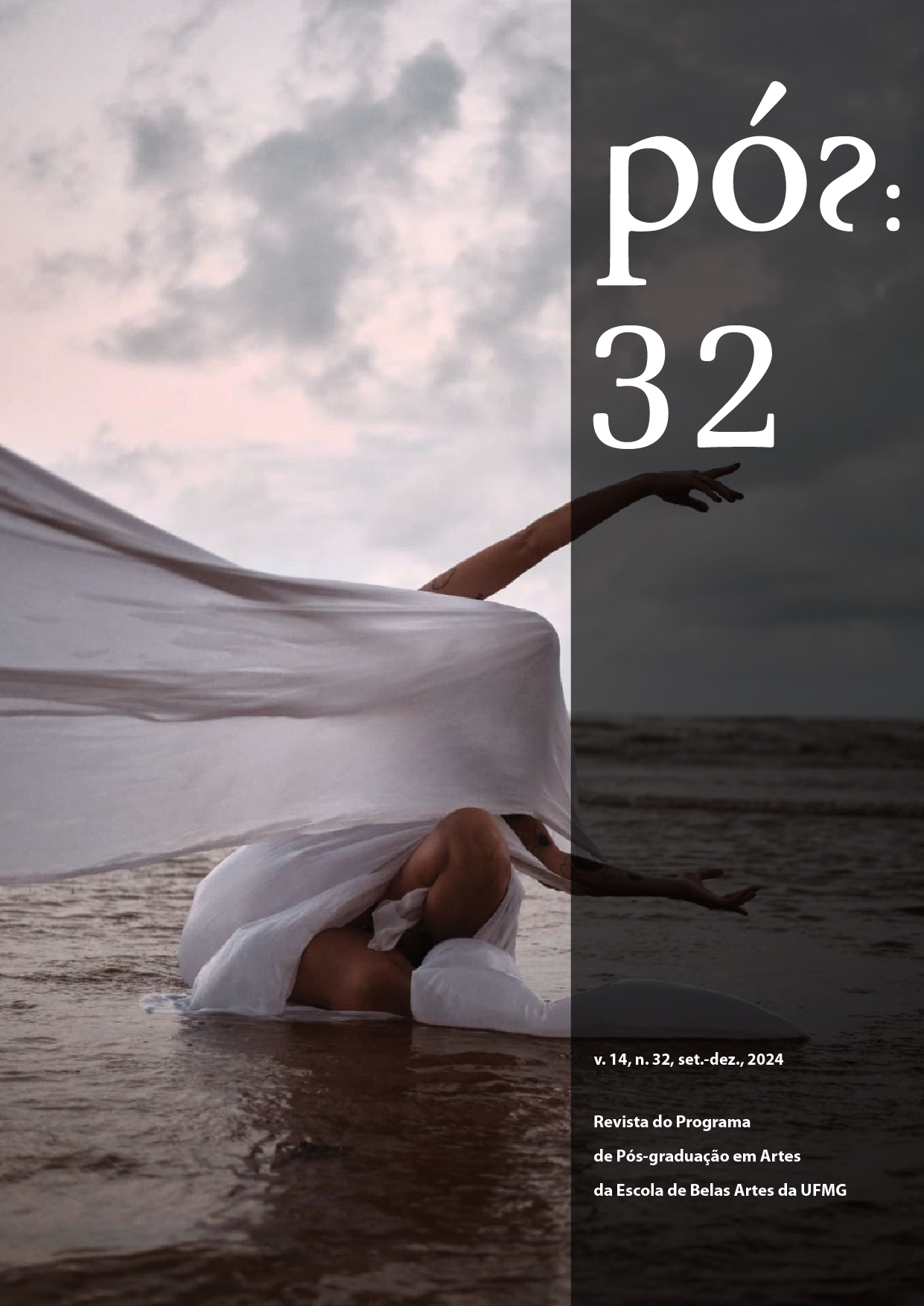The Disappearance of the Girl, the Appearance of the Mother and the Birth of the Myth in The Dead Girl Feast (2008)
Mirror Images and Persona
DOI:
https://doi.org/10.35699/2238-2046.2024.52376Keywords:
Cinema, Myth, Ritual, Mirror ImageAbstract
Cinema is understood as a privileged means for thinking about images, their relationship with consciousness and their various masks. The scene of the mother's return in the film The Dead Girl’s Party (2008) is presented, through depth psychology and the notion of mirror image.It is in the depths of the unconscious that the character Santinho’s conflict with his missing mother and his difficulty in letting go of her to follow his own path can be identified. It is concluded that the myth of the dead girl is imposed on the community through a cult of the expression of a violated feminine, also portrayed in the character of Santinho himself and which serves as compensation for the lack of response regarding the disappearance of his mother.
References
BERGSON, Henri. Matéria e memória: ensaio sobre a relação entre o corpo e o espírito. São Paulo:
Martins Fontes, 1999.
DIDI-HUBERMAN, Georges. O que vemos, o que nos olha. São Paulo: Editora 34, 1998.
DURAND, Gilbert. As estruturas antropológicas do imaginário. São Paulo: Martins Fontes, 2002.
A FESTA da menina morta. Direção: Matheus Nachtergaele. Produção: Vania Catani. Rio de Janeiro:
Bananeira Filmes, 2008. (115 min).
FREUD, Sigmund. Obras incompletas de Sigmund Freud: arte, literatura e os artistas. Belo
Horizonte: Autêntica, 2015.
JOYCE, James. Ulysses. Rio de Janeiro: Civilização Brasileira, 1966.
JUNG, Carl Gustav; KERÉNYI, Karl. A criança divina: uma introdução à essência da mitologia.
Petrópolis: Vozes, 2011.
JUNG, Carl Gustav. O desenvolvimento da personalidade: vol. 17. Petrópolis: Vozes, 2018.
KRISTEVA, Julia; CLÉMENT, Catherine. O feminino e o sagrado. São Paulo: Rocco, 2001.
MÜNSTERBERG, Hugo. Hugo Münsterberg on film. The Photoplay: A Psychological Study and Other
Writings. New York: Routledge, 2013.
VON FRANZ, Marie-Louise. Puer aeternus: a luta do adulto contra o paraíso da infância. São Paulo:
Paulus, 2020.
Downloads
Published
How to Cite
Issue
Section
License
Copyright (c) 2024 Florence Dravet, Maria Eduarda Affonso

This work is licensed under a Creative Commons Attribution-NonCommercial 4.0 International License.
Authors who publish in this journal agree to the following terms:
- Authors retain copyright and grant the journal the right of first publication, with the work simultaneously licensed under the a Creative Commons Attribution-NonCommercial 4.0 International License that permits sharing of the work with acknowledgement of authorship and initial publication in this journal;
- Authors are permitted to enter into additional contracts separately, for non-exclusive distribution of the version of the work published in this journal (e.g., the Creative Commons Attribution License).
- Authors are permitted and encouraged to publish and distribute their work online (e.g., in institutional repositories or on their home page) at any point before or during the editorial process, as this may generate productive changes as well as increase the impact and citation of the published work.
- It is the responsibility of the authors to obtain written permission to use in their articles materials protected by copyright law. Revista PÓS is not responsible for copyright breaches made by its contributors.
Funding data
-
Conselho Nacional de Desenvolvimento Científico e Tecnológico
Grant numbers Processo: 312177/2021-6












